Earlier this year I spent a few weeks in Vietnam travelling it tail to top. I wanted to see how things were picking up in these waning pandemic times, but I also had sustainable travel on my mind—was it possible in Vietnam? In this, the first of a three-part series, I’m in the south and look at plastic, people and power.
The Journey
Night has fallen by the time, ears popping, my VietJet flight begins its descent to Tân Sơn Nhất International Airport. Snoozing with an end-of-the-world podcast filtering into my subconscious, the crackling pilot’s voice jerks me awake. My taxi, an Airbus A321 Neo, is one of the most efficient on the planet according to my plane-spotting son. At less than two years old, and jammed with holidaymakers, flying doesn’t get much more efficient than this.
Vũng Tàu slides by, then we track east, looping below Mỹ Tho, before a right puts us on final to Hồ Chí Minh City, a metropolis of almost nine million people. Throughout our dog-leg approach, a sea of bright lights flickers against cobalt below. From the air, the lights seem far brighter than in my home of Indonesia—something I put down to the cheaper power. As the flaps drop and the undercarriage clunks into place I make out the xe ôm crammed streets, the tall yet narrow housing, the flight announcements crackle through the cabin—why the hell is the sound quality always so bad?! Outside and below, neon is everywhere. “How do you make this sustainable?” I ask myself.
Are we there yet? Almost. Photo: Stuart McDonald.
I’m in Vietnam for my first “real trip” since fleeing Kuala Lumpur for Bali as the pandemic’s heavy curtain fell across the region. In the intervening period, seeing the heavy toll tourism’s retreat inflicted on the island, I turn hard against a pastime I’ve written on for over 20 years. Looking to understand more, I go back to school. I start a Masters in Responsible Tourism Management at Leeds Beckett University. With a year and a half of academic theory done and dusted, I want to see how practical it is to put the theory I’m still learning into action. I also need to think about how I’m going to change my business, Travelfish, to reflect my changing view of the world.
Vietnam, one of the first countries I ever visited in Southeast Asia, way back when in 1994, seems like a good spot to start.
Hồ Chí Minh City: Plastic And People
My first bed of the trip isn’t great. It is a small hotel of 26 rooms, with much fawning press coverage pre-pandemic. Today its story is a common one—under-maintained, it is scruffy and feels like poor value, even at the knock-off rates I pay through an OTA. Built cheap and not to last, across the region, hotels like this litter the landscape. At least at one time my hotel tried to stand out—unlike the thousands of cookie cutter mini-hotels in the city. Trade may pick up once China is back on stream, but, at least in this case, the hotel’s past glory days seem unattainable.
A shellfish for each property. Photo: Stuart McDonald.
According to Agoda, Hồ Chí Minh City has 12,238 rentals and hotels*—one for every 800 residents. By means of comparison, Singapore has 1,095 (again according to Agoda*)—one for around every 5,000 people. Competition must be considerable, how does one stand out from the crowd? For all its flaws in a marketing sense, sustainability could offer a pathway.
In the case of my hotel, single use plastic is everywhere. There’s two plastic water bottles, throw away shampoo, toothbrushes etcetera. At capacity, that’s 130 plastic bottles a day—almost 50,000 per year. Extrapolate that across the 12,000+ properties and you have well over half a billion plastic bottles a year. So where does the plastic go? I take the first baby step in trying to find out.
Suffice to say Hồ Chí Minh City has an absolutely ridiculous amount of cafés and within 24 hours I’ve convinced myself it has the highest number of cafés per square kilometre of any city on Earth. So when I head to My Life Coffee in the heart of District 1 to meet Miquel Àngel, I’m already onto about coffee 32.
Harking from Catalonia, but long-time in Vietnam, Miquel has his fingers in many a sustainability pie. He lectures students on it, helps tourism businesses better practice it, and posts about it frequently on LinkedIn. As we sit, sipping our drink-in iced coffees in plastic cups with plastic lids and plastic straws, we talk about—you guessed it—plastic.
There’s a café every fifty metres. Seriously. Photo: Stuart McDonald.
One of the ventures he is involved in encapsulates where Vietnam, a country awash in plastic, is in all this. Hotels hand over their plastic for recycling and the coasters, coat hangers, and chairs that the plastic is recycled into are sold back to hotels at lower prices than what they’d otherwise pay. In essence, they’re buying their garbage back, but the plastic stays out of landfill—and the ocean—and money is both made and saved. This is the circular economy in action. In an ideal world, the city wouldn’t be going through half a billion bottles a year, but in the meantime, this approach makes sense.
Our conversation drifts to the island of Phú Quốc, a destination only rivalled by Sa Pa in the far north on the unmitigated-tourism-disaster-area scale. The island is home to some of the most egregious cases of environmental destruction in the name of tourism, ravages often driven by development firms possessing deep relationships with officialdom, and as I talk to tourism professionals across the country, when Phú Quốc comes up so does the request to be off the record. As one (not Miquel) says:
“Soon you’ll be able to see Phú Quốc’s landfills from space.”
Stick that on a few Vietnam tourism brochures and see how it flies.
Miquel tells me a story of a local entrepreneur who collects plastic bottles on the island by the truck load. They’re shipped back to the mainland and sold to cement factories, who burn them as fuel. Plastic, you see, is cheaper than coal. I later learn this is a common approach, and not only in Vietnam. This Reuters story details the practice, noting that even in the EU few can agree on the pros and cons. In Vietnam, which lacks the EU’s regulatory framework, it is grounds for concern. Around the cement factory, villages sit, the inhabitants inhaling the fumes day in day out. The irony of Phú Quốc’s plastic contributing to the cement paving over of the island is not lost on me. For the sake of being even-handed, I should note that Tom of Vietnam Coracle (who I also drank a thousand coffees with) maintains the island isn’t a complete write off.
The next evening I’m out with Huỳnh Phương, a guide for street food walking tour outfit Street Food Man. To my mind, there’s three vital ingredients to a food tour—the guide, the food and the people who prepare the food. Phương is nailing the first of these—and a couple of weeks after our walk, she wins the Top Guide Of The Year from her employer. She has her rapport with the vendors in that perfect spot where it doesn’t come across as practiced nor tired, and at one point, an elderly couple cook up bột chiên (fried rice flour cakes) from their food stall, and they banter, mother-to-daughter-like, as she patiently translates my questions. It sounds like a simple thing, but as anyone who has done any guiding will know, this is a hard thing to get right. Phương nails it.
“Excuse me while I find the answer to your latest stupid question.” Photo: Stuart McDonald.
Later in the evening, Vinny, Street Food Man’s founder, joins us for a chat. He’s a young guy, I’d guess early 30s, with no shortage of grand ideas—and the energy he’ll need to carry them out. After the lean pandemic years, his business bounces back, thanks in no small part to his top ranking on TripAdvisor (side note: I found the company through a recommendation—not TripAdvisor!). Foreign-owned platforms like TripAdvisor, AirBnb and GetYourGuide deliver the vast majority of his business, taking a cut on every customer that books through them—those leakage things are everywhere I tell ya. To my mind the warning klaxons are blaring, eggs in baskets and all that, but to Vinny it is a business reality. A comfortable reality when you’re on top I guess.
Early on, I don’t remember how it comes up, Vinny reveals that one of his aunts is Kim Phúc. Immortalised by photographer Nick Ut’s “Napalm Girl” photo, Vinny pulls his phone out and shows me the picture. Taken on June 8, 1972, Vinny points to Kim, then two or three uncles who are also in the shot. Next come some photos of Trảng Bàng village—where Ut took the photo—and where Vinny still has family.
Vinny’s sojourn into the war era takes me by surprise, and while I’m digesting what he’s telling me (along with the food), he asks how much time I have. He says he can take me there, to visit his family, the site of the photo, and the pagoda they fled to afterwards.
Hungry? Call Vinny. Photo: Huỳnh Phương.
At first I think he’s joking, but he’s serious—he’s taken other guests there—two days, three days—he says. I’m leaving the next day though, so need to decline, but looking at the pics of the other guests he’s taken there, I’m filled with regret. For almost all visitors, myself included, Tây Ninh province, where Trảng Bàng lies, is but a thirty minute stop on the minibus to see the famous Cao Đài temple there. Thanks to Vietnam’s short tourist visa—and/or unrealistic travel plans—one never seems to have enough time here.
Phan Rang: Tilting At Windmills
Talk to any traveller who hits Southeast Asia’s shores and chances are they’ll comment on the weather. Where the climate is best summed up as hot and wet or hot and dry, the sun shines—a lot. Nowhere does it seem to shine quite as much as Vietnam’s Sunshine Coast—from Qui Nhon in the north to Phan Thiết in the south. Wanting a look at Vietnam’s solar and wind battery, I hedge my bets, and catch a train to the middle—to the twin towns of Phan Rang–Tháp Chàm.
Yes, it rains almost the entire time I am there.
Take me to your leader. Fancy windmills, Phan Rang. Photo: Stuart McDonald.
Looking to fuel investment, in the 2010s Vietnam Electricity offer 20-year contracts to buy renewable power. By regional standards the rates are high—some might say inflated—and as hoped, solar and wind boom. Today, lacking the downsides some offshore farms in the Mekong Delta have experienced, the Sunshine Coast is purported to be a showcase of the nation’s future-facing sustainable energy efforts. As I ride the interior, dozens upon dozens spin silently in the steady wind that makes this coastal strip a favourite with kite-surfers. Looking to shed some light on the benefits of the steady breeze, I talk to Mike Tatarski, the Vietnam-based journalist behind Vietnam Weekly.
“Solar in particular was wildly popular—way more successful than anyone anticipated, least of all the government,” he tells me on a call.
Sounds good, there is though, a major problem—or rather, a miss-match. In a way this mirrors Vietnam’s resoundingly young population and the older dudes who run the joint. The boom delivers solar panels and turbines that are generations ahead of the power infrastructure they need to be plugged in to. Back to Tatarski:
“The grid can’t handle it, it hasn’t been upgraded to handle the intermittent power that wind or solar generate. When the sun is shining all day in Phan Thiết, some goes to grid, but a lot is not used as there’s no storage. There’s simply too much [power], and this is going to continue to be a problem. Upgrading the grid is expensive and will take time.”
A Vietnamese academic I speak to in Huế later in my trip, is less diplomatic:
“Imagine trying to plug your iPhone into a rotary phone cable then scratching your head when you can’t make a landline call. This is the level of official ineptitude we deal with in this country every day. It is exhausting.”
Until the grid improves, the enormous wind turbines are most useful as selfie props. Ever-reliable for when it comes to the travel asinine, VietnamNet notes:
“Located close to the centre of Ninh Thuan, Dam Nai wind farm is quickly emerging as a popular tourist attraction, especially among young travelers who come to snap epic photos with the wind farm in the background.”
And here I am thinking Indonesia has a selfie-prop addiction.
By regional standards, Vietnam is a mid-level performer on renewables, but most of it is hydro, and coal remains a mainstay with more on the way. When I ask at my guesthouse in Phan Rang if they use solar power, they shake their head.
Some renewable-powered devices are working well. Random coast swing between downpours, north of Phan Rang. Photo: Stuart McDonald.
For the traveller looking to stay at hotels using renewable energy, sustainability claims around power use, particularly on sites such as the forever sustainability-grandstanding Booking.com, where the claims are self-assessed and not checked, should be treated with extreme caution. Later in the trip, while in Hà Nội, I swing by three hotels which, according to Booking were using 100% renewable energy, in all three I’m told they’re on the mains.
So what’s the sustainable traveller to do? When booking a hotel, ask them directly about their power use—do not, under any circumstances, trust the claims published by Booking.com. While you’re at it, make yourself a PITA and ask to have all single-use plastic removed from your room. You will probably need to do this every day you stay there.
Slow down your travels. Book direct with tour operators to make sure more of your money stays in-country. Don’t try to “do” Vietnam in a month, and avoid tour companies that offer to facilitate this—especially those using domestic flights to do so. Instead aim to spend that month in one portion of the country, thus allowing you to go visit Vinny’s extended family—or spend three days motorbiking in the rain around Phan Rang.
* The numbers for properties listed by Agoda are forever changing.
Couchfish is 100 per cent independent and reader-supported. If you’re not already a subscriber, and you’d like to show your support, become a paying subscriber today for just US$7 per month—you can find out more about Couchfish here—or simply share this story with a friend.
Don’t forget, you can find the free podcasts on Apple, Pocket Casts and Spotify as well as right here on Couchfish.

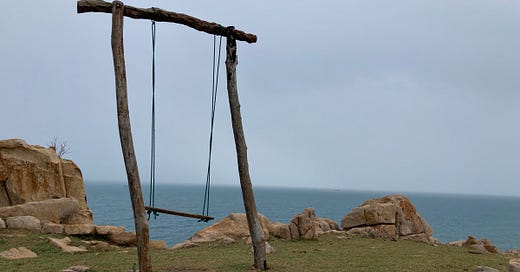

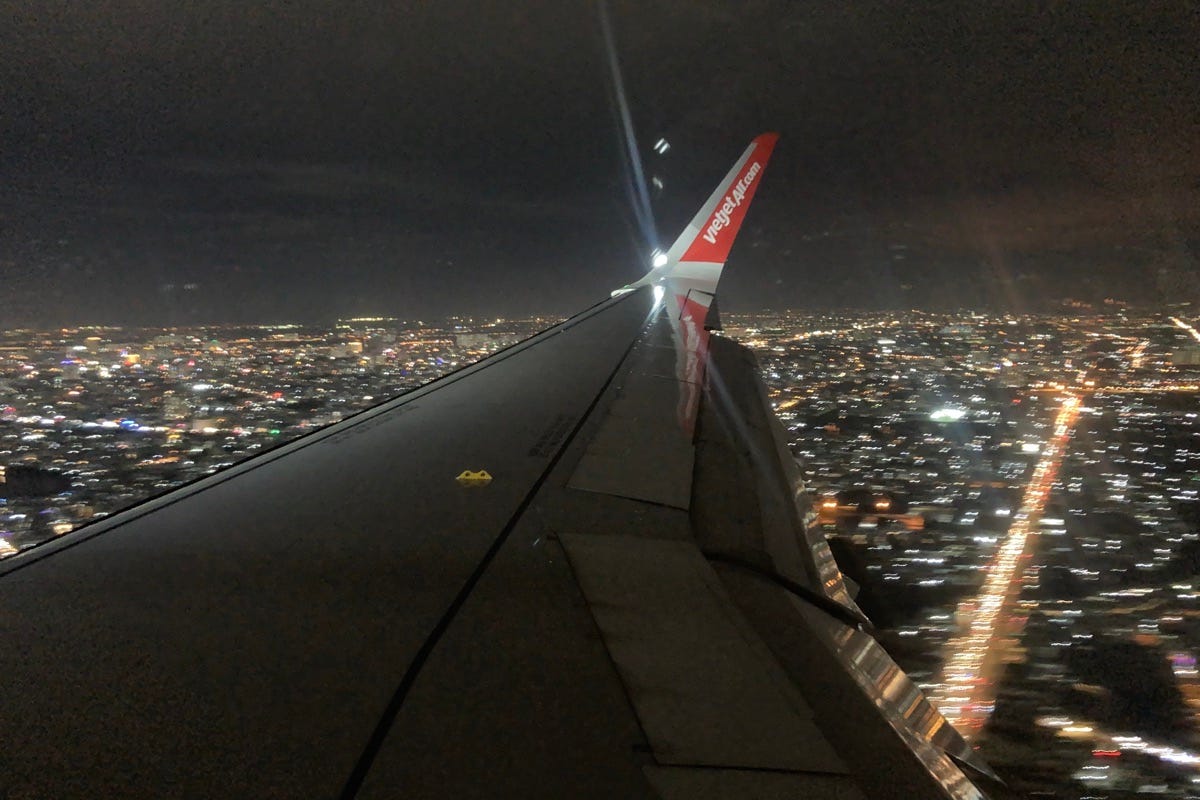
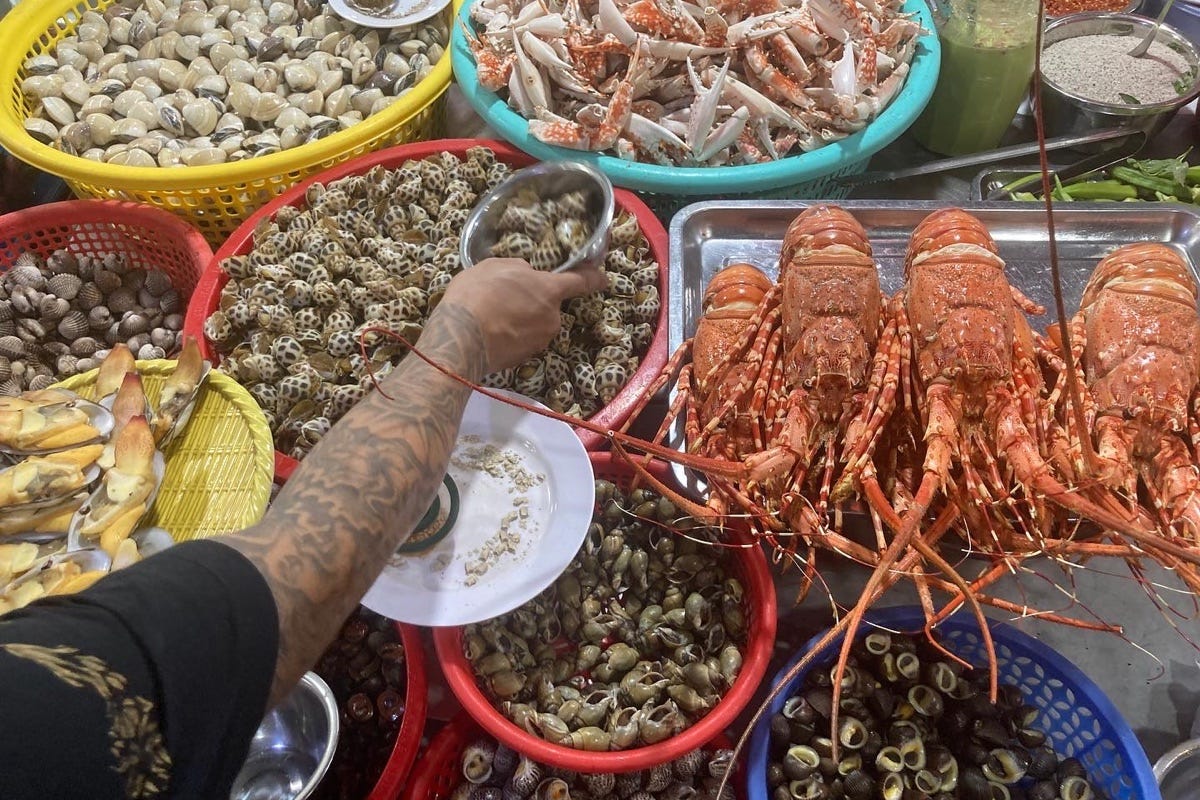
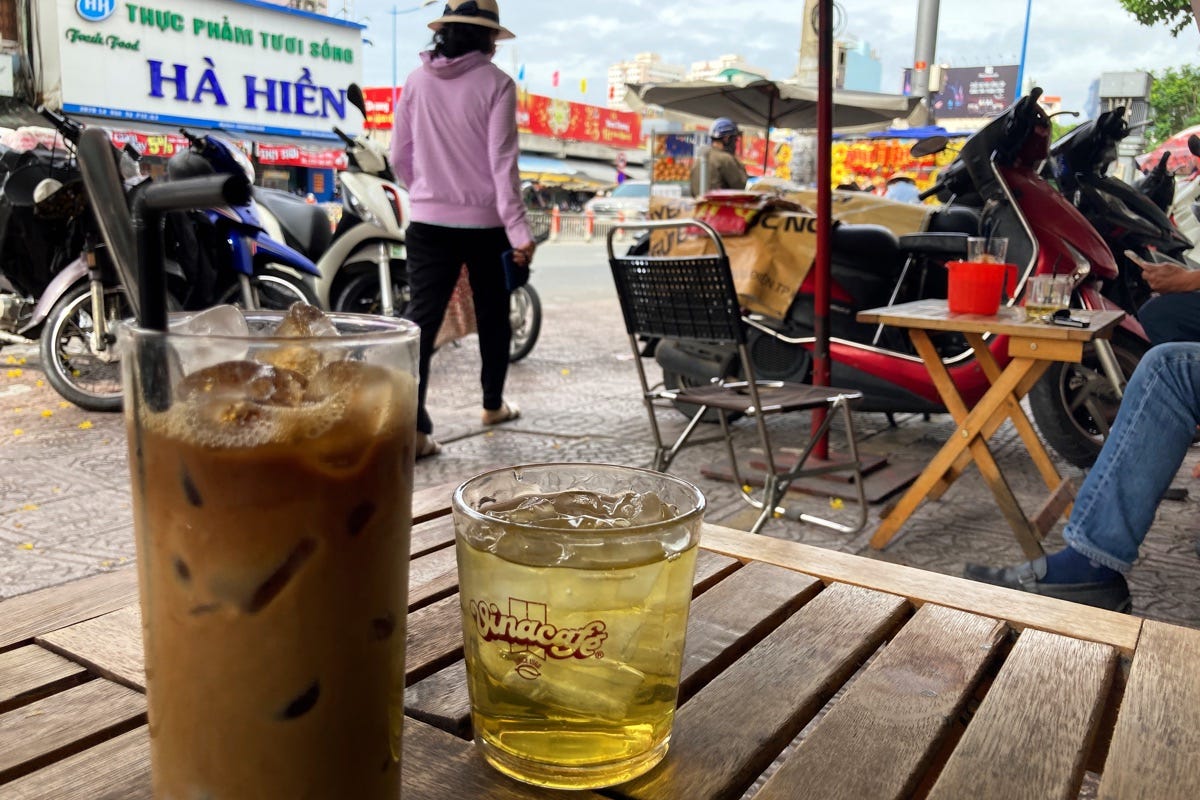
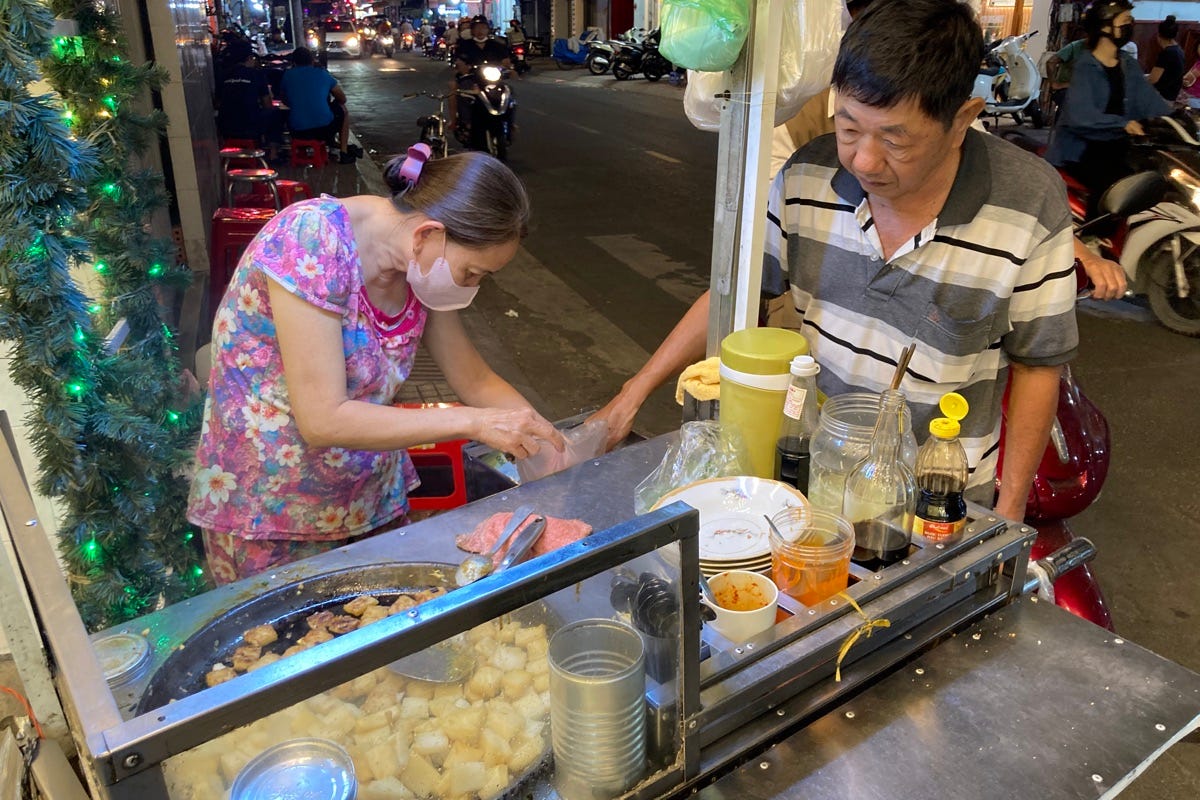
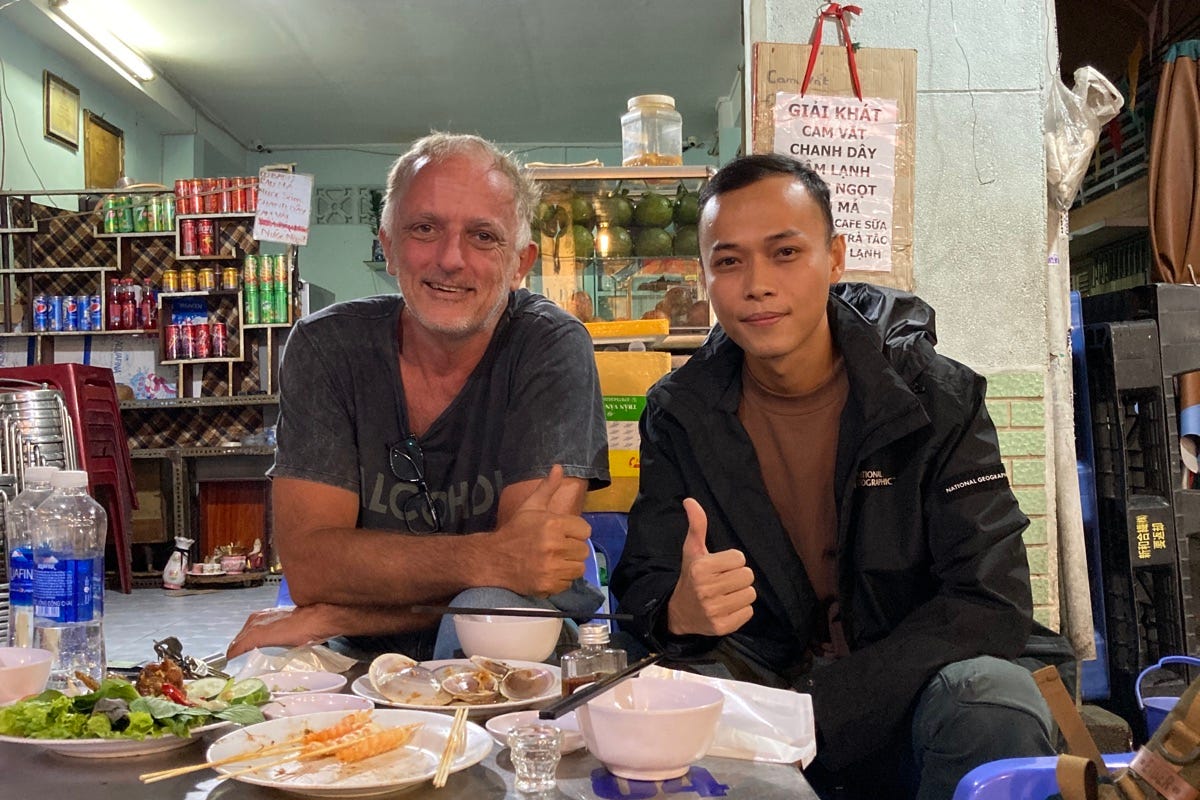
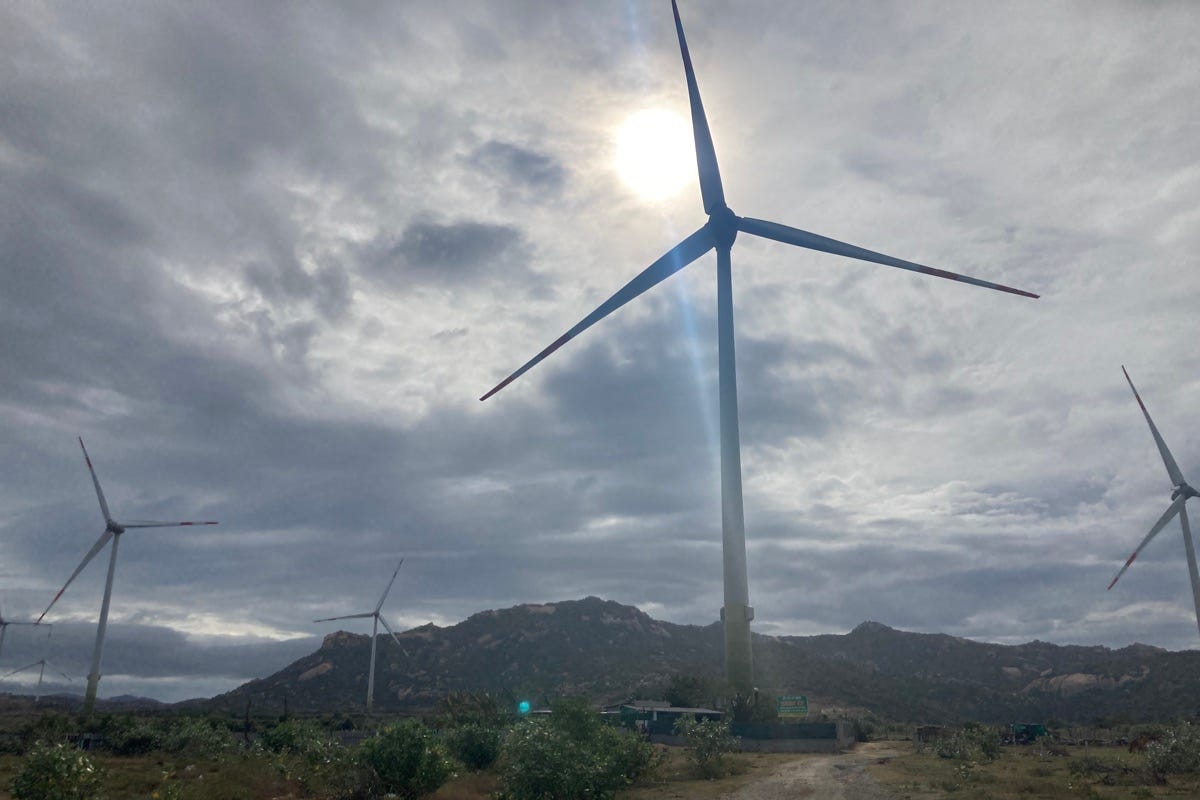










Share this post